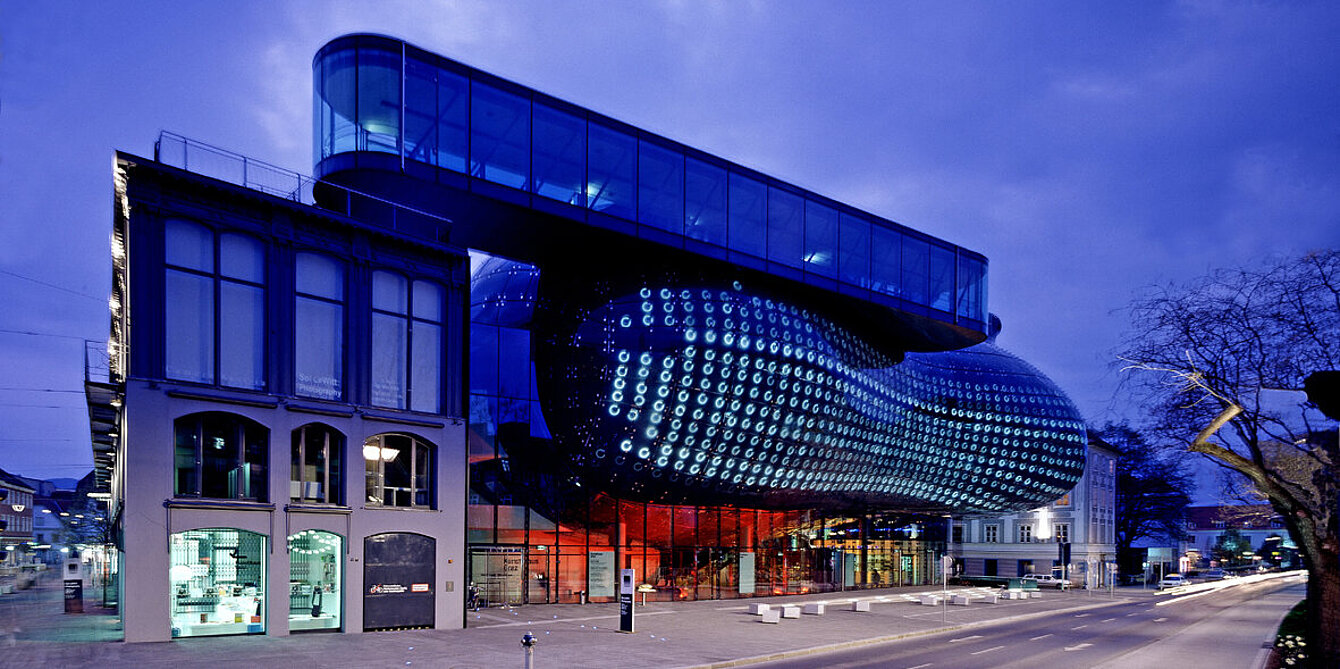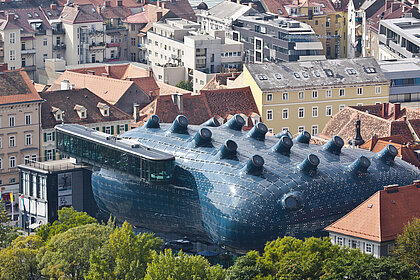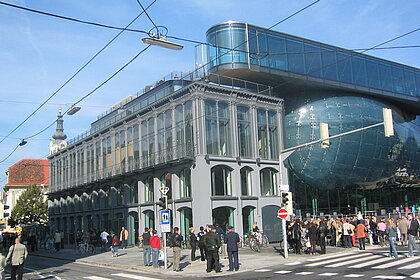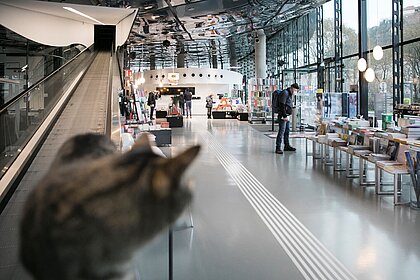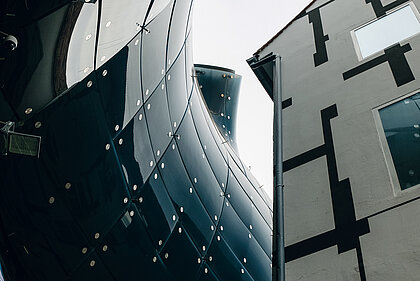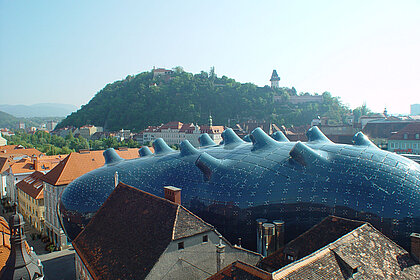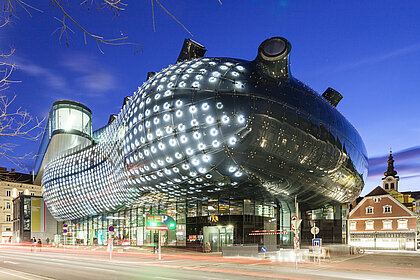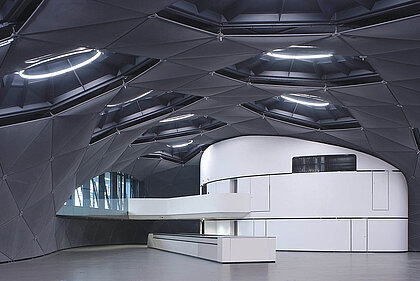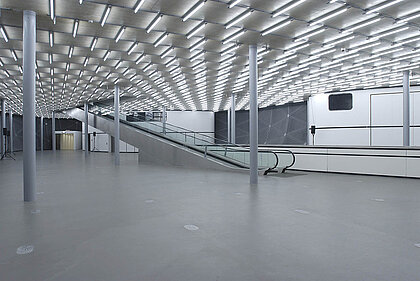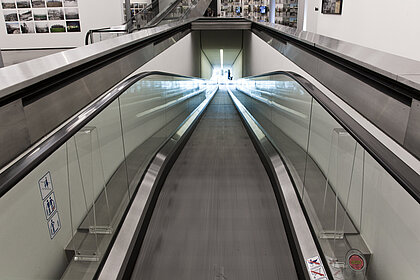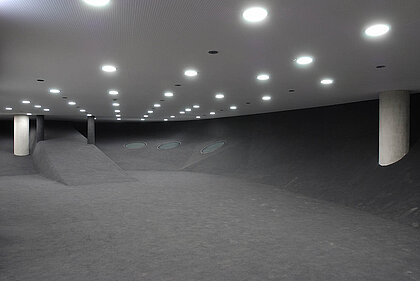At the time of its development around the millennium, the architects and planners of the Kunsthaus were entering new territory in building technology. Clearly, this is a building that reflects the turn of an era: analogue and digital, visionary and down-to-earth. The design and the competition model were created "by hand", the large blue form was then generated by using computer software simulating the model and the data were transmitted to the executive companies, who produced the individual components.
The blue shimmering bubble of the Kunsthaus is spectacular. It rises above the glassy ground floor. With a span of up to 60 metres, the biomorphic double-walled skin forms a solid, reinforced concrete structure over two floors.
The glass ground floor is accessible from Lendkai as well as from Südtirolerplatz. In addition to the Kunsthaus Graz Shop and Kunsthauscafé, it also offers a large event room (Space04) and a spacious foyer for visitors, featuring art and design.
On a 30-metre-long mechanical treadmill, known as the "Travelator" or "Pin", visitors pierce the skin of the building, cross the room for children and young people (Space03) and finally reach the first exhibition level, Space02. Removable neon tubes under the flat ceiling, arranged along an orthogonal grid system, generate artificial light. Another treadmill leads to the second exhibition level, Space01, which reaches eight metres at its highest point. The exhibition areas receive adjustable natural light through the so-called nozzles - trunk-like openings facing outwards. One of these focuses on the clock tower, creating a link between the city's two main attractions. Artificial light is provided by an expressive, spiral neon light and switchable spots.
At the end of the tour, visitors leave the dark interior and enter the needle, an all-glass viewing platform that offers an unforgettable view of Graz.
On the upper floors, bridges connect the new building with the "Iron House", whose landmark cast-iron construction - the oldest in Central Europe - was carefully renovated in the course of the construction of the Kunsthaus Graz.



















